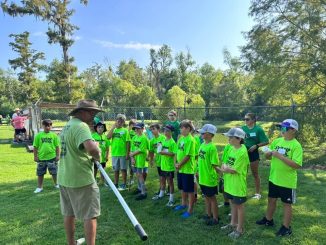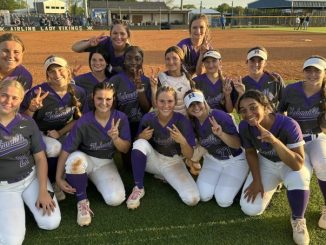
Provided NASA maps for Apollo 11 landing
When a Southern University at New Orleans professor told Garland Green’s class to aim for the moon and stars in life, Green took it seriously.
By July 20, 1969, as he watched the Apollo 11 landing that put America’s first astronauts on the Moon, the Boutte native was amazed. It was at that moment he realized that he had helped put them there.
But he couldn’t tell anyone about it for nearly 40 years.
“We did not know we were on the NASA team. We were just doing a special project. That’s what we were told,” he said of being among cartographers with the U.S. Army Corps of Engineers who suddenly had a new assignment in 1967. “We had to have top secret clearance so we were not allowed to discuss anything with anyone, not even my wife. We were on a need-to-know basis.”
At about the same time, then President John F. Kennedy was calling for the nation’s mission to the Moon, sending NASA into motion to make it happen. NASA began developing the rocketry to get there, but needed help determining where the space module could safely land.
Green and his group didn’t know how the maps of the moon they provided would be used at the time. After handing them over to NASA, the assignment was over and Green went back to his regular work.
In the 1960s, Green was already keeping secrets for national security when he had started “peering down from the satellites” at the Earth as a cartographer for the Corps of Engineers.
“It was another secret that no one had a reason to know,” he said. “We were flying satellites long before anyone knew it over the Soviet Union, actually the whole world, but I was assigned to the Soviet Union and Vietnam.”
They were making 3-D maps and Green said he saw the Russians making rockets at a time they denied having them.
“You can see a lot of what’s going on by looking at the topography,” he said.
Although the technology was limited at the time, the cartographers, also trained as surveyors, were getting photographs of the earth. Satellites took the photographs and then dropped the footage by parachute to the U.S. Air Force, which had airplanes waiting in the air for them.
“We had to transfer the data we saw on the photography and the satellites, particularly measurements,” Green said. “We made the maps based on the photographs and what we knew to determine heights and changes in topography.”
Their unique skills made them capable of mapping the Moon.The cartographers were able to turn the images and data provided into the 3-D maps of the moon needed to make the call on the landing spot. Green recalled how they came to know the light side of the moon’s topography with its craters and crevices.
“It was different,” he said. “We got a feeling for what it really looked like, but we were mapping information no one else was seeing. We were seeing it for the first time and to determine if it could support life. It turned out to be as close to the Earth’s surface in dimension and elevation changes.”
Green said they applied their knowledge of the Earth to understand the moon’s geology.
By 1970, he left the Corps of Engineers to pursue his PhD at the University of Michigan and then went back to Washington to again work for the federal government. It was work that Green appreciated.
“Black people had no opportunities in Louisiana and particularly in St. Charles Parish for jobs,” he said. “We were lucky to survive coming out of a little town like Boutte, but we did. But were it not for my upbringing in Boutte, I don’t know where I’d be either. My ideas, my thoughts … all that was gotten from Boutte. Who I am is great deal due to where I began.”
Green remained appreciative for the opportunities he got in life, even if he couldn’t talk about them for years. He called himself, “One of the shadows who keeps everything working and no one knows it.”
Nearly five years ago, he came out of the shadows about the Apollo 11 mission and now tells students they can aim for the stars – or the moon – in life, too.
Green added, “Even a boy from Boutte can do something significant.”




Be the first to comment